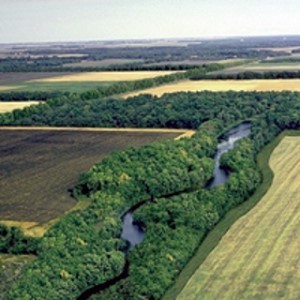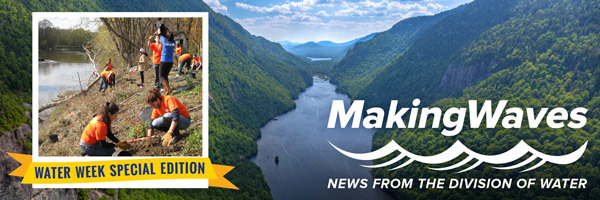Theme for 2017: Nonpoint Sources of Pollution
Celebrate Water Week by learning more about nonpoint sources of pollution and how you can help protect, restore and conserve water for the future!
Today’s topic: Best Management Practices
Did you know?
- Best Management Practices (BMPs) are the actions on the ground that help to improve and restore water quality. Identifying the appropriate BMPs is critical to a successful reduction of nonpoint source pollution. The BMPs that are selected depends on the type of pollution of concern (e.g., phosphorus, nitrogen), the land use (e.g., urban, suburban, agriculture) and the management goal (e.g., meeting a reduction goal).
- Years of research has determined how efficient a BMP can be at treating or capturing pollutants. These efficiencies may be achieved if the BMPs are properly sized, constructed and maintained. DEC has developed a simple spreadsheet calculator that can be used to compare estimated pollutant load reductions for different BMP and land use scenarios.
-
Green infrastructure (GI) is a category of BMPs to manage stormwater, a leading nonpoint source pollution source impacting New York’s waters. On a larger scale, green infrastructure includes preserving and restoring natural landscape features (such as forests, floodplains and wetlands), and reducing the amount of land covered by impervious (watertight) surfaces. On a smaller scale, GI practices include green roofs, pervious pavement, rain gardens, vegetated swales, planters and riparian buffers. Green infrastructure also has secondary benefits, including aesthetic improvements, cleaner air, energy savings, and urban cooling.
- A BMP systems approach to project implementation means that more than one related management practice are being installed together. This approach leads to a greater overall environmental benefit. For example, installing related GI practices in an urban area will help control stormwater at its source and reduce the burden on combined sewage systems.
Test your water knowledge
What are riparian buffers and why are they an important Best Management Practice? (Answer is below)
Learn more
On DEC’s website, you can find information about:
Answer: Riparian buffers are lands bordering streams, rivers, lakes or ponds that are planted with vegetation to protect water from pollution. They are an efficient and cost effective practice that may be installed on agricultural and non-agricultural (urban, suburban) land. Riparian buffers stabilize stream banks, control erosion and prevent runoff from reaching waterbodies, trap nutrients, reduce flood impacts and improve habitat. Funding is available for riparian buffers through several state and federal programs.

Bird's eye view of a riparian buffer.
|



